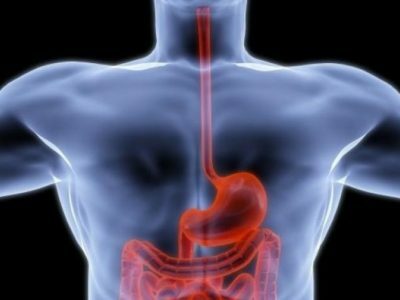- 1 Types of pathology
- 2 European classification
1 Types of pathology
The simplest description of the types of gastroesophageal reflux disease is given in a document called ICD-10.According to clinical signs, the disease in it is divided into the following types:
- gastro-oesophageal reflux disease with esophagitis( presence of inflammation on the mucosa of the esophagus) - code according to ICD-10 K21;
- GERD without the presence of esophagitis - K21.9.

Recommended reading
- Code for classification of the ICD 10 chronic gastritis
- What is fibroadastuduodenoscopy
- Symptoms of GERD
- Effective agent for gastritis and gastric ulcer
Endoscopic method of classification of GERD began to be applied in the early 90s, and they are still successfully used in modern medicine. How does GERD develop? On the border of the esophagus and stomach there is a muscle - the lower esophageal sphincter, which prevents reverse casting of digested products into the esophagus. When it weakens, there is a violation of the functionality of the muscle, as a result of which the gastric contents are thrown back together with hydrochloric acid.
In the esophagus, due to this disturbance, a number of changes take place, in which the mucous membrane is affected.
These changes formed the basis for the classification of the disease.
- So, at the first stage, a part of the mucosa that is located closer to the stomach is affected. It inflames, blushes, it may appear small erosion changes. At the initial stage of the disease, such changes may be absent, and the diagnosis will be made based on the patient's symptoms or using other diagnostic methods.
- The second stage of the disease is characterized by a greater part of the esophagus lesion( more than 18%).The main symptom that accompanies the disease is called heartburn.
- In the third stage, the mucous membrane of the esophagus and the lower esophageal sphincter are affected by erosion. Without proper treatment, ulcers appear on the site of erosion. The main symptoms in this case will be burning, pain in the stomach, which are most often manifested at night.
- The fourth stage manifests itself as a lesion of the entire mucosa, erosive changes are observed throughout the entire circumference of the esophagus. Symptoms at this stage will be acute, in full.
- At the last stage in the body irreversible changes occur - narrowing and shortening of the esophagus, ulceration, intestinal epithelium replaces the mucous membrane.
-
 IMPORTANT TO KNOW! Gastritis? Ulcer? To have a stomach ulcer not turned into cancer, drink a glass. ..Read the article & gt; & gt;
IMPORTANT TO KNOW! Gastritis? Ulcer? To have a stomach ulcer not turned into cancer, drink a glass. ..Read the article & gt; & gt;
2 European classification
This classification is differently called Los Angeles. It appeared in the late 90s and includes the following degrees of GERD:
- A( the organ is affected a little, and the size of erosive changes does not exceed 6 mm, while they are located only on one fold of the mucosa);
- B( erosive changes are not extensive, but the size of the erosions themselves is from 6 mm and above);
- C( more than 70% of the esophagus affects erosions or ulcers, the size of which is more than 6 mm);
- D( the esophagus is almost completely affected).
According to this classification, erosive changes can occur at any of the stages. All these species were classified at the stage in order to make it easier for practitioners to understand the development of the disease and to select the appropriate treatment correctly. Self-classification of the disease only on symptoms is not possible, so if you have unpleasant symptoms, you should see a doctor. Delay with a visit to a doctor will cost more for money and take longer.
-
 Gastroenterologist. IMPORTANT: "I beg you, if you began to worry about abdominal pain, heartburn, nausea, do not in any way do gases. .."Read more & gt; & gt;
Gastroenterologist. IMPORTANT: "I beg you, if you began to worry about abdominal pain, heartburn, nausea, do not in any way do gases. .."Read more & gt; & gt;
The ICD-10 code for GERD stands for International Classification of Diseases of the 10th revision and gastroesophageal reflux disease. For therapeutic purposes, diseases are divided into stages, which allows you to determine the choice of medications and the duration of therapy.
If we talk about GERD, then everything depends on the degree of involvement of the mucosa of the esophagus. Fibrogastroduodenoscopy is used to study the lower part of the intestine, which is why the disease is classified, because the procedure clearly shows how deeply the organ is affected and what changes occurred as a result of the disease.
Do you have gastritis?
GALINA SAVINA: "How easy is it to cure gastritis at home for 1 month. A proven method - write down a recipe. ..!"Read more & gt; & gt;



